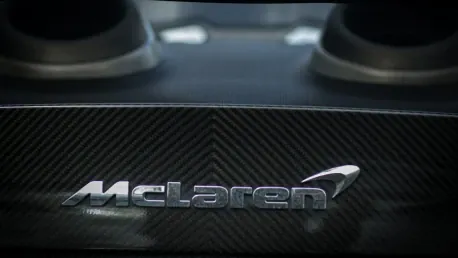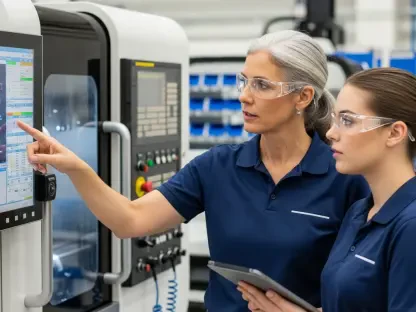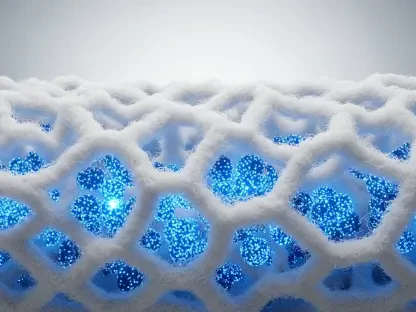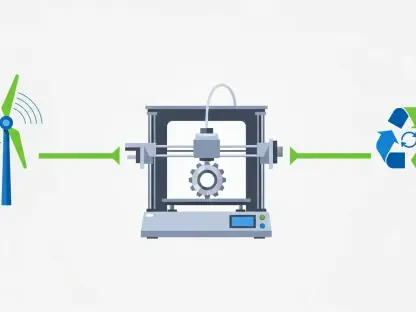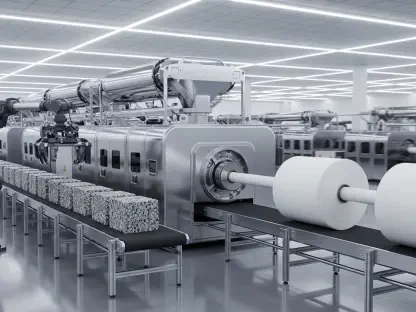McLaren’s recent launch of the W1 hypercar isn’t just sparking conversations among car enthusiasts; it’s marking a watershed moment for the entire automotive industry. Leveraging advanced 3D printing technologies, specifically titanium 3D printing, McLaren is creating critical components that signify a broader shift toward more efficient and innovative manufacturing practices. This move not only sets new performance benchmarks but also showcases how cutting-edge technology can transform the future of automotive design and manufacturing. As the automotive sector increasingly embraces additive manufacturing, the implications for production efficiency, cost-effectiveness, and sustainability are substantial.
The Rise of 3D Printing in Automotive Manufacturing
The integration of 3D printing technology into automotive manufacturing is not a completely new phenomenon, but McLaren’s application of it showcases its transformative potential. By utilizing additive manufacturing techniques, McLaren has achieved substantial weight savings without sacrificing the strength of the components. This is particularly apparent in the W1 hypercar’s suspension parts, which are produced using titanium 3D printing. The resulting components are not only lighter but also more resilient, which enhances both the performance and durability of the vehicle. These innovations in manufacturing lead to improved production times and reduced material waste, showing a definite upside in cost savings and a smaller environmental impact.
Traditional manufacturing methods often involve cutting away excess material, a process that inherently generates waste. In stark contrast, 3D printing builds components layer by layer, precisely as needed. This efficiency is not just beneficial from a cost perspective but also aligns with global sustainability efforts aimed at reducing industrial waste. By minimizing material waste, McLaren is able to meet some of its sustainability goals, making the company a pioneer in eco-friendly automotive manufacturing practices. The success of this technique in McLaren’s W1 hypercar indicates that additive manufacturing is poised to become a staple in the industry.
Enhanced Performance Metrics through Lightweight Engineering
One of the most striking features of the McLaren W1 hypercar is its impressive power-to-weight ratio, a direct result of innovative 3D printing technologies. The W1 tips the scales at a lean 1,399 kg and boasts a power-to-weight ratio of 911PS/tonne, offering unparalleled performance capabilities. This significant achievement is largely due to the strategic use of 3D-printed components that considerably reduce the vehicle’s overall weight. The W1 is powered by an MHP-8 V8 combustion engine, which works in conjunction with an electric motor to deliver an astonishing 1,275 horsepower.
The W1 doesn’t just excel in raw power; its acceleration metrics are equally impressive. It can sprint from 0-200 km/h in a mere 5.8 seconds and achieve 0-300 km/h in under 12.7 seconds. The vehicle’s top speed is capped at 350 km/h, setting new benchmarks in the hypercar segment. These remarkable statistics underscore the practical benefits of integrating advanced manufacturing techniques into automotive design. The weight savings achieved through 3D printing directly translate into enhanced dynamic performance, proving that high-tech manufacturing techniques can deliver real-world gains.
The Role of Divergent Adaptive Production System (DAPS)
Central to McLaren’s technological advancements is its partnership with Divergent Technologies and the adoption of the Divergent Adaptive Production System (DAPS). DAPS is an AI-powered generative design platform that facilitates the creation of highly optimized and complex structures. This state-of-the-art system allows for rapid iteration of designs and the production of multiple vehicle models on a single manufacturing platform. By doing so, DAPS significantly enhances manufacturing efficiency and flexibility, enabling McLaren to incorporate more sophisticated and lightweight designs into their vehicles.
The DAPS system not only improves the design process but also contributes to a streamlined supply chain and reduced production times. This aligns McLaren’s manufacturing process with broader industry trends toward sustainability and innovation. By reducing lead times and the need for extensive supply chains, DAPS promotes a more sustainable manufacturing approach. As McLaren pushes the boundaries of what is possible in automotive engineering, the role of DAPS cannot be overstated. It represents a shift toward more intelligent, efficient, and environmentally friendly automotive manufacturing processes.
Industry-Wide Implications of McLaren’s Breakthrough
McLaren’s adoption of 3D printing technologies and innovative production systems like DAPS has far-reaching implications for the entire automotive industry. By showcasing the practical benefits and efficiencies of additive manufacturing, McLaren is setting a new precedent that other manufacturers are likely to follow. Automakers such as Jaguar Land Rover and Volkswagen Group have already begun exploring similar technologies, albeit in different capacities. Jaguar Land Rover primarily utilizes 3D printing for creating plastic prototypes that speed up vehicle testing and ensure compliance with environmental standards.
Meanwhile, Volkswagen has integrated metal 3D printing into their production lines, achieving considerable cost reductions and efficiency gains. This wide-ranging trend towards the adoption of 3D printing technologies is driven by a compelling need for innovation, efficiency, and sustainability within the automotive sector. With proven benefits in terms of weight savings, performance enhancement, and cost-effectiveness, these technologies are expected to become even more integral to automotive manufacturing processes in the future. McLaren’s advancements signal a transformative era for the industry, pushing the boundaries of what is possible.
Future Trends in 3D Printing and Automotive Manufacturing
As 3D printing technology continues to evolve, its impact on automotive manufacturing is likely to grow even more significant. Experts predict ongoing advancements in the areas of cost-effectiveness and the functional performance of 3D-printed components. Currently, the technology is transitioning from use in R&D and prototype development to widespread production of end-use parts. Companies are increasingly recognizing the strategic advantages of additive manufacturing, which include enhanced design flexibility and improved production efficiency.
Looking ahead, optimizing materials for 3D printing, enhancing design capabilities, and improving overall manufacturing processes will be key focus areas. As McLaren and other industry leaders continue to push the envelope, the future of automotive manufacturing promises to be lighter, faster, and more sustainable. McLaren’s revolutionary approach serves as a model for the broader automotive world, demonstrating that marrying high-performance engineering with cutting-edge technology can yield significant benefits.
Conclusion
McLaren’s recent unveiling of the W1 hypercar is generating significant buzz among car enthusiasts and marking a pivotal moment for the automotive industry. By incorporating advanced 3D printing technologies, particularly titanium 3D printing, McLaren is creating vital components that highlight a broader industry shift toward more efficient and innovative manufacturing practices.
This approach doesn’t merely set new performance benchmarks; it also exemplifies how state-of-the-art technology can revolutionize automotive design and production. The advent of additive manufacturing in the automotive sector holds far-reaching implications for production efficiency, cost savings, and overall sustainability.
As more automakers adopt these technologies, the entire industry’s landscape could undergo a significant transformation. The potential for faster prototyping and reduced material waste adds an extra layer of importance to this technological embrace. McLaren’s strategy suggests that the future of automotive manufacturing lies in continually pushing the boundaries of what technology can achieve, making the W1 hypercar not just a marvel of engineering but also a beacon for the industry’s future pathways.
